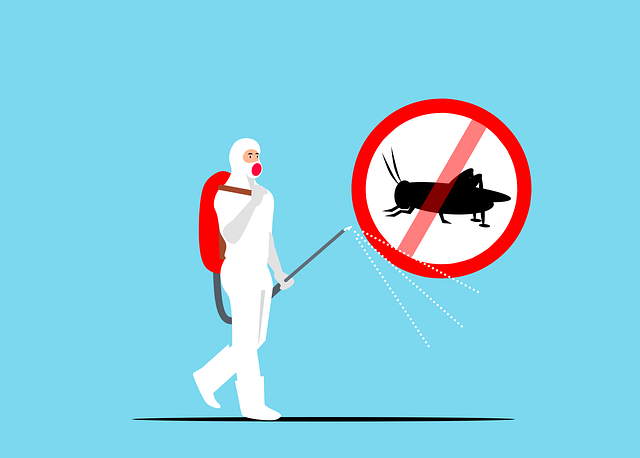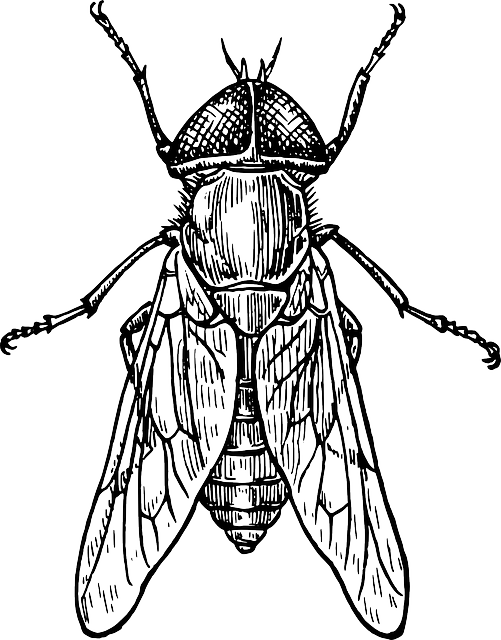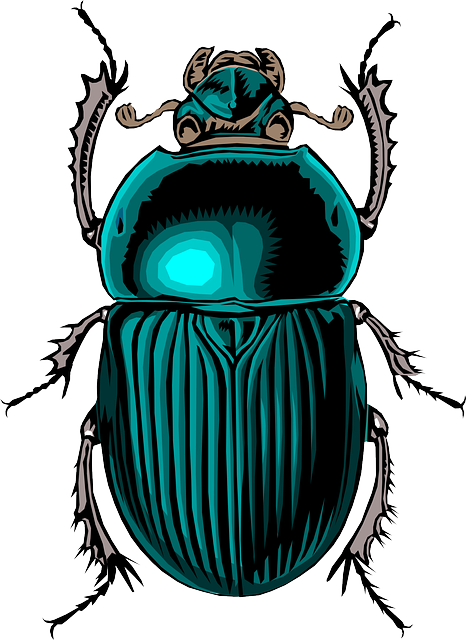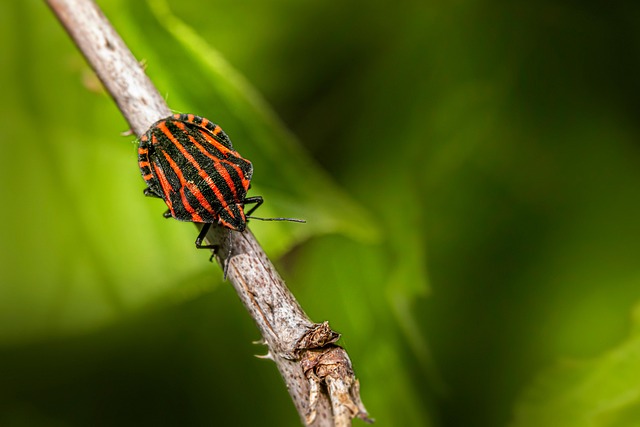Commercial bug extermination goes beyond eliminating visible pests. Professionals assess environments, identify entry points and breeding grounds, then implement tailored strategies using advanced equipment and eco-friendly methods. Regular inspections are key for early detection. Partnering with reliable bug exterminators helps businesses maintain clean, safe spaces, enhancing customer satisfaction and operational efficiency. These professionals handle common pests like termites, bed bugs, ants, rodents, and cockroaches, minimizing economic and reputational risks. They use diverse strategies, including baits, traps, chemical and non-chemical treatments, integrated pest management (IPM), and physical controls. Choosing the right bug exterminator requires considering experience, reputation, methods, safety compliance, and eco-friendliness. Safety and environmental considerations are paramount, with eco-friendly chemicals and IPM strategies used to preserve natural predators and minimize ecological impact. Regular cleaning, sanitation, sealing entry points, and outdoor maintenance also aid in pest prevention. Successful cases demonstrate the effectiveness of professionals in managing challenging pest problems. Future trends include technological innovations like molecular repellents, AI, and automation for precise, sustainable bug extermination.
“In the world of commercial property management, ensuring a pest-free environment is paramount for maintaining operations and customer satisfaction. This comprehensive guide delves into the intricacies of commercial bug extermination, exploring its foundational concepts, common pest challenges, and effective strategies. From understanding the impact of bugs on businesses to selecting the right bug exterminator, this article equips readers with vital knowledge. Discover innovative techniques, safety considerations, and preventive measures to revolutionize your approach to pest control.”
Understanding Commercial Bug Extermination: The Basics

Commercial bug extermination is a specialized service designed to rid businesses of pest infestations, focusing on prevention and control. It’s more than just eliminating visible bugs; it involves understanding the unique challenges posed by commercial spaces. These environments often include diverse ecosystems, from offices with food preparation areas to warehouses with storage items that attract pests. A professional bug exterminator assesses these settings, identifying entry points, breeding grounds, and potential food sources.
They then employ tailored strategies using advanced equipment and eco-friendly methods to eradicate existing bugs and prevent future invasions. Regular inspections are crucial in commercial settings, as they allow exterminators to catch issues early, ensuring a more effective and efficient response. By partnering with reliable bug exterminator services, businesses can maintain clean, safe, and pest-free environments, enhancing customer satisfaction and operational efficiency.
Common Pests That Require Professional Extermination

Commercial establishments often face unique pest control challenges due to their size, structure, and frequent foot traffic. Professional bug exterminators are crucial in managing and eradicating common pests that can disrupt operations and pose health risks. Termites, for instance, are a significant concern, especially in warmer regions, as they can cause substantial structural damage if left unchecked. A reliable bug exterminator will employ advanced treatments to protect buildings from these invisible invaders.
Another prevalent pest is the elusive bed bug, known for its ability to thrive in hidden spaces and quickly multiply. These tiny pests have become a global concern due to their resilience and the potential for rapid infestation. Commercial bug exterminators use specialized equipment and treatments to locate and eliminate bed bugs at all stages of development, ensuring a safe and comfortable environment for employees and customers alike.
The Impact of Bugs on Businesses and Their Operations

In the business world, even a small infestation of bugs can have significant and costly implications. Commercial bug exterminators are often called upon to address this growing concern. Pests like ants, rodents, cockroaches, and termites can disrupt operations, damage property, and compromise food safety, especially in restaurants and food processing facilities. These insects and creatures not only cause physical harm but also tarnish a company’s reputation, especially if they attract negative publicity or social media attention.
The presence of bugs can lead to loss of productivity as employees might have to temporarily halt operations for extermination and cleanup. Moreover, repairs and replacements due to pest-related damage can result in substantial financial losses. Commercial bug exterminators employ specialized strategies and products to eradicate pests effectively while minimizing disruptions. They understand the unique challenges faced by businesses, offering tailored solutions that ensure a safe, clean, and productive work environment for employees and customers alike.
Strategies Used by Bug Exterminators for Effective Control

Bug exterminators employ a multitude of strategies to ensure effective pest control. One common approach involves identifying and understanding the behavior patterns of the specific insect species causing the infestation. This knowledge allows them to deploy targeted treatments, such as baits or traps, that lure and eliminate pests without harming non-target organisms.
Additionally, professional bug exterminators utilize a range of chemicals and non-chemical methods. Pesticides are carefully applied in strategic locations to minimize environmental impact while maximizing effectiveness. Beyond chemical interventions, they may implement physical controls like sealing entry points and removing habitats that attract pests. Integrated Pest Management (IPM) is another key strategy, which integrates multiple techniques to prevent, control, and monitor pest populations, promoting a more sustainable and environmentally friendly approach to bug extermination.
Choosing the Right Bug Exterminator for Your Commercial Space

When it comes to commercial bug extermination, selecting the ideal professional is paramount for ensuring a pest-free environment. It’s essential to find a reputable and licensed bug exterminator with extensive experience in handling commercial spaces. Look for companies that specialise in this area, as they will have the necessary tools, knowledge, and expertise to tackle even the most challenging infestations effectively.
Consider their reputation, customer reviews, and the methods they employ. Reliable bug exterminators should offer tailored solutions, providing a detailed plan and explaining their processes transparently. They must also adhere to safety regulations and use environmentally friendly products whenever possible. With the right exterminator on your side, you can rest assured that your commercial space will be free from unwelcome insects or rodents.
Safety Measures and Environmental Considerations in Pest Control

When it comes to commercial bug extermination, safety and environmental considerations are paramount for both the pest control professionals and the business owners. Reputable bug exterminators employ a range of methods that minimize risks associated with traditional pesticides. These include the use of eco-friendly, non-toxic chemicals that are safe for employees, customers, and pets. Additionally, they implement strict protocols to ensure proper ventilation and adherence to safety guidelines during treatment.
Beyond chemical usage, modern pest control practices incorporate integrated pest management (IPM) strategies. IPM focuses on preventing and reducing pest issues through a combination of methods like sanitation, exclusion, and biological controls. These approaches not only eliminate bugs effectively but also foster a sustainable environment by preserving natural predators and minimizing the ecological impact of pest control activities.
Preventive Measures to Maintain a Pest-Free Environment

Maintaining a pest-free environment is not just about curative measures; it’s equally important to implement preventive strategies. One effective approach is regular cleaning and sanitation, especially in areas prone to attract pests like kitchens and dining spaces. Bug exterminators recommend eliminating potential food sources by storing groceries in airtight containers, promptly cleaning up spills and crumbs, and ensuring proper waste disposal. Additionally, sealing entry points such as gaps around doors, windows, and pipes can significantly reduce pest intrusion.
Another crucial preventive measure is maintaining a neat and tidy outdoor space. Trimming trees and shrubs to prevent shadows from creating hiding spots for pests, removing clutter like fallen leaves or woodpiles that serve as breeding grounds, and keeping gutters clean to avoid water accumulation are all part of creating an unwelcoming environment for bugs. Regular inspections by professional bug exterminators can also help identify potential entry points and provide tailored solutions to keep your space pest-free.
Case Studies: Successful Bug Extermination Stories

Successful Bug Extermination Stories
In urban settings, commercial bug extermination often involves tackling persistent pest problems in large buildings and spaces. Consider a case study of a high-rise apartment complex plagued by an infestation of German cockroaches. Despite previous attempts using over-the-counter methods, the issue persisted. A professional bug exterminator was called in to assess the situation. They identified entry points around utility pipes and windows, treated affected areas with targeted pesticides, and implemented a preventive maintenance plan that included regular inspections and sealed entry points. Within two months, the cockroach population was significantly reduced, and residents reported no further incidents.
Another compelling story involves a food processing facility battling a mouse infestation. Standard pest control measures hadn’t been effective due to the complex layout and constant influx of incoming goods. A specialized bug exterminator was engaged to develop a comprehensive strategy. They conducted detailed inspections, identified breeding grounds, and implemented a multi-step approach combining baiting, trapping, and structural modifications. Regular monitoring and prompt response to any new sightings ensured the mouse population remained under control. This successful collaboration resulted in a safer, more hygienic working environment for the employees and a significant reduction in food waste due to pest damage.
The Future of Commercial Bug Extermination Techniques

The future of commercial bug extermination is poised for a significant transformation, driven by technological advancements and evolving consumer expectations. Traditional methods, while effective, often rely heavily on chemical pesticides that can have detrimental environmental impacts and health concerns. As such, there’s a growing trend towards eco-friendly and integrated pest management (IPM) strategies. Innovative solutions like targeted molecular repellents, biological control agents, and advanced monitoring systems are gaining traction. These methods not only minimize the use of harmful chemicals but also offer precise, effective bug extermination tailored to specific needs.
Technological integration plays a pivotal role in this shift. Digital tools such as remote sensing, artificial intelligence (AI), and machine learning algorithms enable more efficient data collection and analysis, helping bug exterminators identify and mitigate pest problems proactively. Additionally, automation and robotics are expected to enhance the accuracy and safety of extermination processes, making them faster, more precise, and less reliant on manual labor. These advancements promise a future where commercial bug extermination is not only effective but also sustainable and environmentally friendly.
